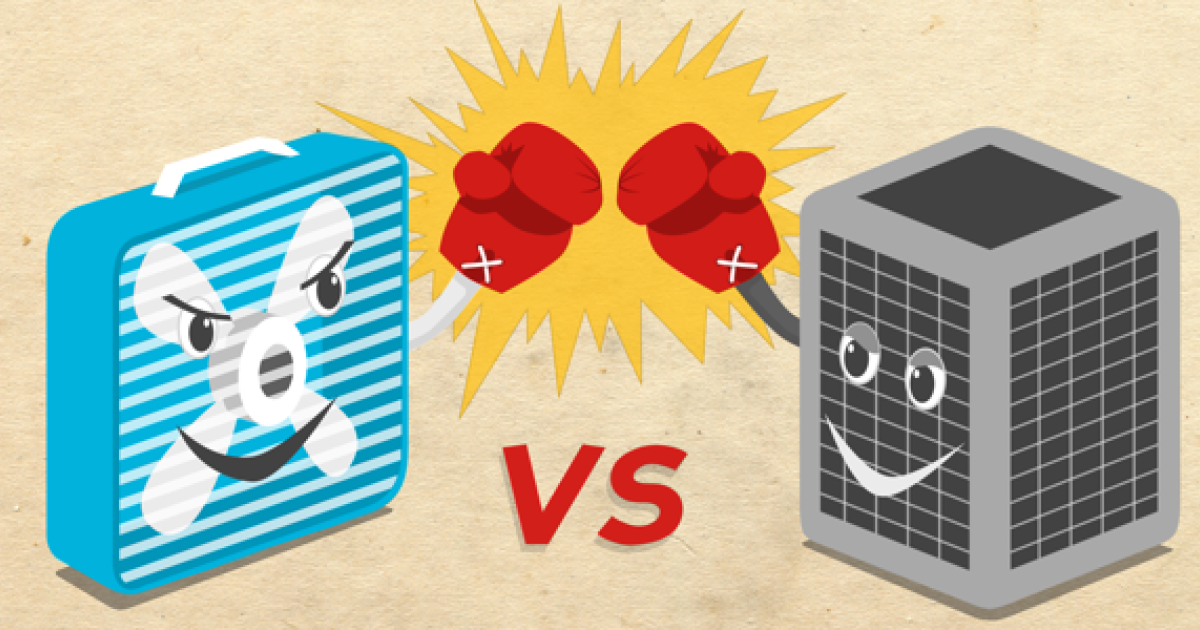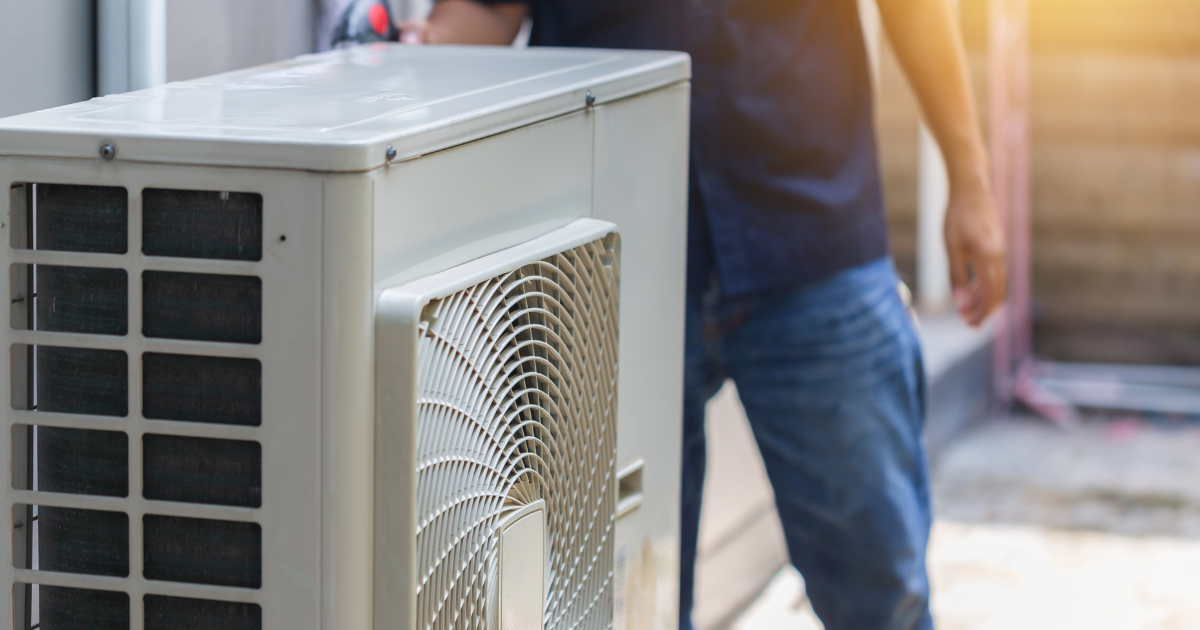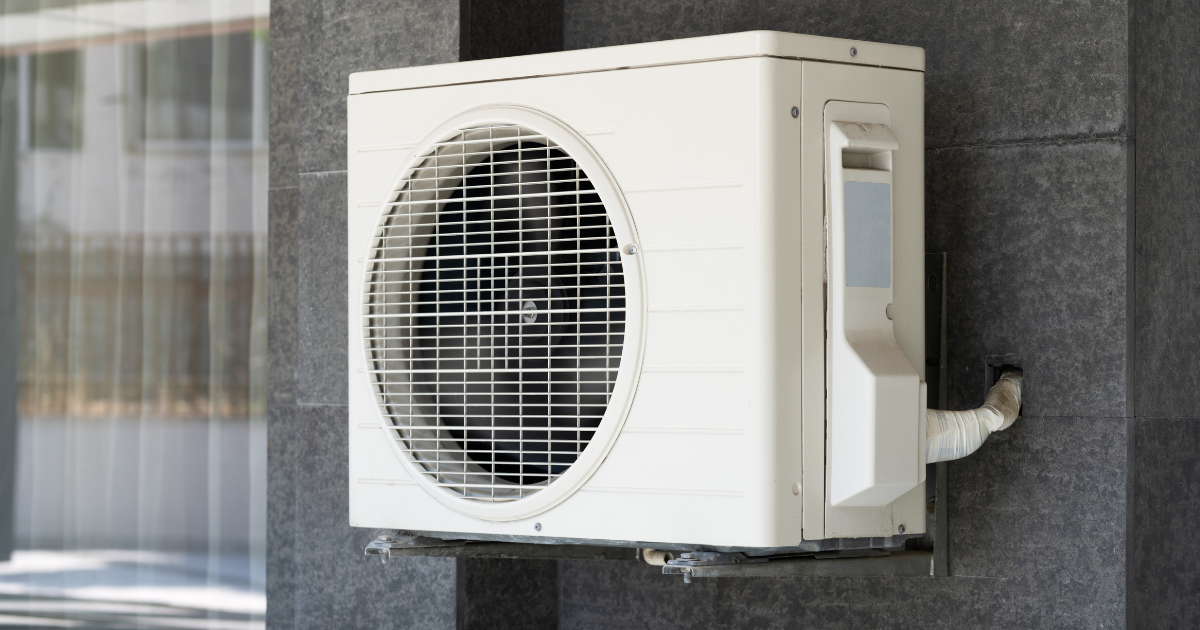Home Cooling System Comparison
Summer is heating up, and as the sun beats down on the cracked concrete, your home slowly but surely turns from comfortable hovel to sweltering sauna. Fortunately, instead of melting into a puddle, you have a wide range of cooling systems to choose from. The real trick is figuring out what’s right for you. Let’s take a look at the different home cooling systems at your disposal.
Ceiling Fan
Simply turn your ceiling fan on in a forward—often counter-clockwise—motion and you’re greeted with cool air. The spinning blades force air down. The downward movement of air improves circulation in the room and creates a wind chill effect, similar to opening your car window or blowing on some hot soup. The effect makes you feel cooler and accelerates your sweat’s rate of evaporation.
However, ceiling fans aren’t the best cooling option. Although ceiling fans improve circulation and cool your skin, they don’t actually lower the temperature in your room, and they don’t reduce humidity. Running a ceiling fan when no one is around wastes electricity and causes a mild rise in temperature from the fan’s motors. Furthermore, not many homes these days come with ceiling fans, stylish as they may be. It’s not worth the trouble to install a ceiling fan for such minimal gain.
Portable Fan
The cheap and easy solution, portable fans certainly get the job done in milder temperatures. Much like a ceiling fan, portable fans improve circulation and create a wind chill. The great thing about portable fans is their mobility, so you can be more strategic with the placement of your fans. For example, place one fan at your open door and another pointing out a window across your home to get a breeze moving through your home.
Once you get into hotter temperatures, a single fan isn’t much help. They don’t have the size or power of ceiling fans and aren’t as good at cooling as more robust systems.
Evaporative Cooler
Evaporative coolers, or swamp coolers, are technically air conditioners in that they condition air via cooling, but where your average A/C unit cools air using metal coils, a swamp cooler works through evaporation of water. Air passes through a series of damp pads in an evaporative cooler. The water on these damp pads evaporates into the air, which is then pumped into your home, pushing warm air away.
As effective as they are, evaporative coolers do have their downsides. Operating via evaporation means putting water into the air. While that’s fine if you live in a dry climate, more humidity in any other climate will make you feel miserable. Although evaporative coolers generally use less energy than your average air conditioner, they require a regular supply of water. Water conservation is just as pervasive an issue as electricity use.
Air Conditioner
The air conditioner is the crème de la crème of home cooling systems, the greatest respite for boiling, sweaty days. An estimated two-thirds of homes in the United States have air conditioners.
Air conditioning systems work by transferring heat from your home’s interiors to its surrounding environment while pumping cool air into the home. Air is cooled as it passes over an evaporator, a series of metal coils filled with refrigerant, while hot air is released outside via a condenser.
Air conditioners appear in several varying types, including:
- Central: Central air conditioning systems circulate cool air through a series of ducts in your home or business, dispensed through vents in floors, ceilings, and walls. As the cooled air gets warmer over time, it flows back to the central unit, where it is cooled and re-dispersed through your building.
- Room: Window or room air conditioners are the more compact version of central air units and are designed to cool individual rooms. When used properly, room air units are less expensive than central air.
- Ductless: Ductless systems consist of an outdoor unit—containing the compressor and refrigerant—and an indoor component that delivers the cooled air into the home. Ductless units are incredibly flexible and can be installed in homes, businesses, apartments, and room additions where adding ductwork might be too difficult. Ductless systems offer the best balance of value, cooling power, and efficiency.
Air conditioning systems offer optimal cooling and climate control. They keep you and your home cool and take some of the humidity out of the air. The main concern with air conditioning is energy efficiency, but improvements in technology have led to more efficient, eco-friendly units. Air conditioners are an all-around great solution for staying cool, and with the variety of different systems and retrofits, you shouldn’t have trouble finding a unit that works for your personal budget and lifestyle.
Air conditioners come out on top, but if you have any questions about cooling systems, don’t hesitate to call or contact Bob Jenson A/C for more information.

Bob Jenson
For over 45 years, Bob Jenson has been providing quality heating and air services to the San Diego community.
Request Service
Please fill out the form below to request an estimate or schedule service.
"*" indicates required fields







